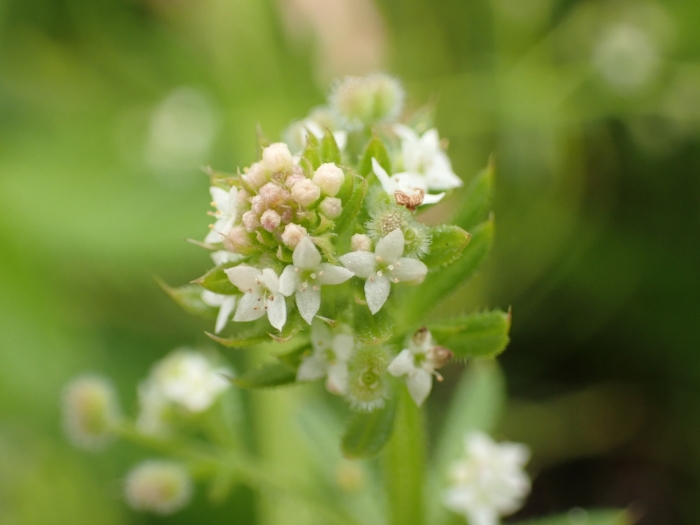Cleavers
(Galium aparine)
Cleavers (Galium aparine)
/
/

© Cricket Raspet
CC BY 4.0
Image By:
© Cricket Raspet
Recorded By:
Copyright:
CC BY 4.0
Copyright Notice:
Photo by: © Cricket Raspet | License Type: CC BY 4.0 | License URL: http://creativecommons.org/licenses/by/4.0/ | Uploader: chilipossum | Publisher: iNaturalist |

























Estimated Native Range
Summary
Galium aparine, commonly known as cleavers, is an annual herbaceous plant native to a wide range of habitats including woodlands, hedgerows, scrubs, and riverbanks across Europe, North Africa, and Asia. It typically grows to a height of 1-5 feet (30-150 cm) and has a sprawling habit, with stems that can climb or form dense mats on the ground. The stems are covered with small hooked hairs, which allow the plant to cling to other vegetation and surfaces. Cleavers produce tiny, white to greenish flowers from late spring to summer, which are not particularly showy but are followed by distinctive burr-like fruits that also have hooked hairs.
Cleavers are valued for their medicinal properties, as they have been traditionally used as a diuretic and for treating skin conditions. In gardens, they can be used as a ground cover in wildflower meadows or naturalistic plantings, though they are often regarded as a weed due to their aggressive self-seeding. They prefer moist, nutrient-rich soils and can tolerate a range of light conditions from full sun to partial shade. While cleavers require little maintenance, they can become problematic if not managed, as they spread rapidly and can overtake other plants.CC BY-SA 4.0
Cleavers are valued for their medicinal properties, as they have been traditionally used as a diuretic and for treating skin conditions. In gardens, they can be used as a ground cover in wildflower meadows or naturalistic plantings, though they are often regarded as a weed due to their aggressive self-seeding. They prefer moist, nutrient-rich soils and can tolerate a range of light conditions from full sun to partial shade. While cleavers require little maintenance, they can become problematic if not managed, as they spread rapidly and can overtake other plants.CC BY-SA 4.0
Plant Description
- Plant Type: Herb, Vine
- Height: 1-3.9 feet
- Width: 2-3 feet
- Growth Rate: Rapid
- Flower Color: Green, White
- Flowering Season: Spring, Summer
- Leaf Retention:
Growth Requirements
- Sun: Part Shade, Full Shade
- Water: High
- Drainage: Medium, Slow
Common Uses
Bird Garden, Butterfly Garden, Low Maintenance
Natural Habitat
Native to woodlands, hedgerows, scrubs, and riverbanks
Other Names
Common Names: Cleavers, Stickyweed, Catchweed Bedstraw, Cleaverwort, Goose Grass, Catchweed
Scientific Names: , Galium aparine, Aparine hispida, Aparine vulgaris, Aparine vulgaris, Asperula aparine, Asperula aparine var. aparine, Asterophyllum aparine, Crucianella purpurea, Crucianella purpurea
GBIF Accepted Name: